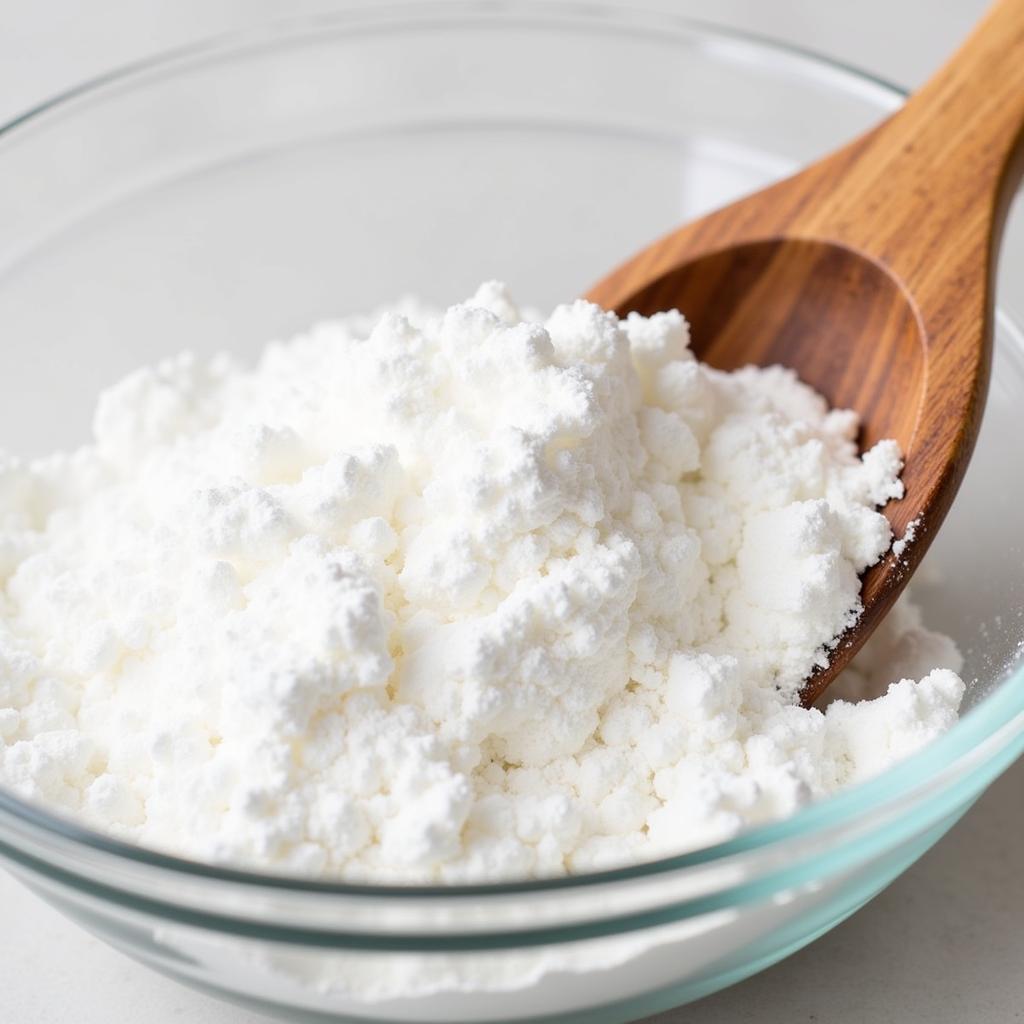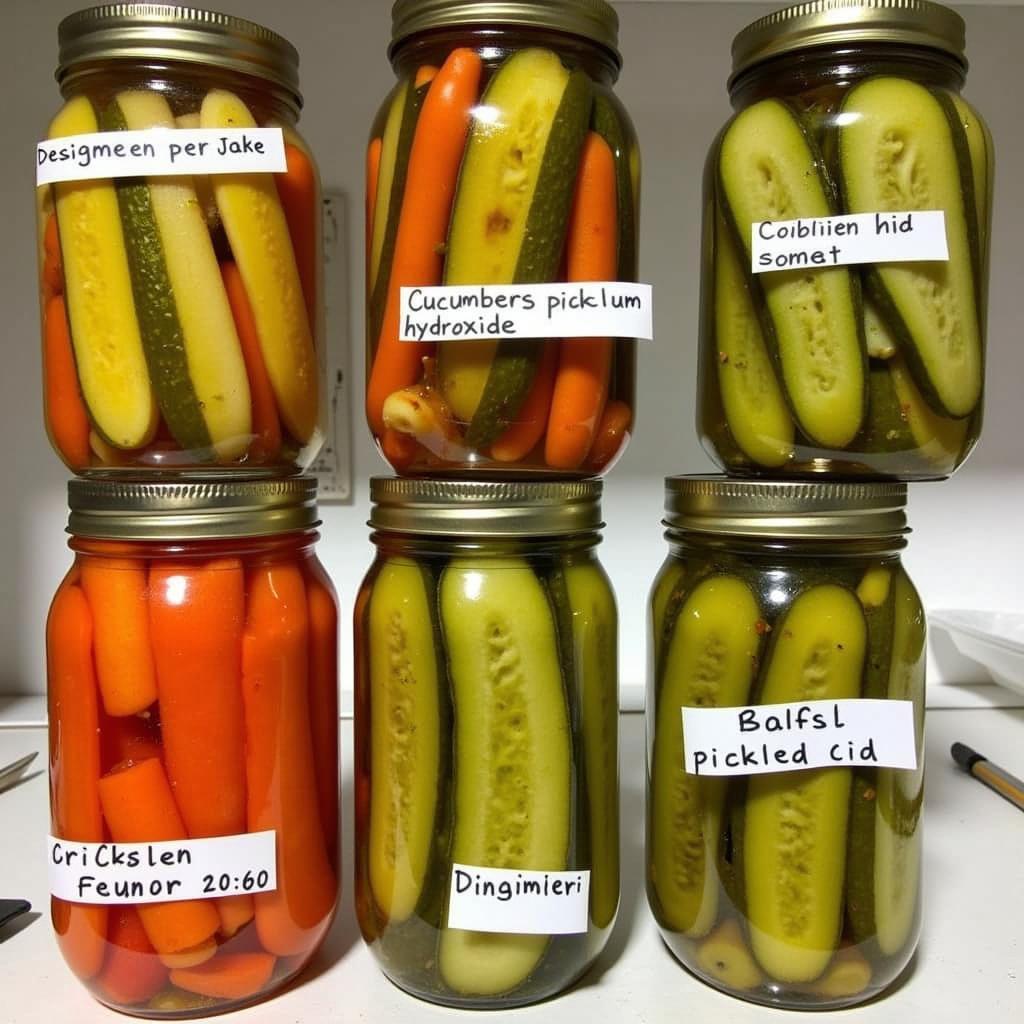Calcium Hydroxide Food Grade, also known as pickling lime or hydrated lime, is a crucial ingredient in various food processing applications. From achieving that perfect pickle crispness to creating traditional tortillas, this versatile compound plays a surprisingly significant role in our diets. food grade calcium hydroxide isn’t just a chemical compound; it’s a key component in achieving desired textures and flavors in many of our favorite foods.
Understanding Calcium Hydroxide in Food
Calcium hydroxide (Ca(OH)₂) is a white, powdery substance created by reacting calcium oxide (quicklime) with water. The food-grade version undergoes stringent purification processes to ensure it meets safety standards for consumption. Its alkaline nature makes it a powerful tool in food processing, influencing texture, pH levels, and even nutritional content.
 Calcium Hydroxide Food Grade Powder
Calcium Hydroxide Food Grade Powder
One of the most common uses of food grade calcium hydroxide is in pickling. By soaking cucumbers or other vegetables in a calcium hydroxide solution, often called limewater, the pickles retain their crunch and firmness. This process prevents them from becoming mushy during fermentation by strengthening the pectin in the cell walls.
The Science Behind the Crisp: How Calcium Hydroxide Works
Calcium hydroxide reacts with the pectin in fruits and vegetables, forming calcium pectate. This compound is insoluble and creates a stronger, more rigid structure within the plant cells. This is what gives pickles their satisfying snap and prevents them from softening during pickling or canning.
Beyond Pickles: Exploring Other Culinary Applications
While pickling is perhaps its most well-known application, calcium hydroxide’s role in food extends far beyond preserving cucumbers. In Mexican cuisine, it’s used in the process of nixtamalization, where corn kernels are soaked in an alkaline solution. This process not only softens the kernels for grinding into masa (dough for tortillas) but also increases the bioavailability of niacin, a vital B vitamin.
Furthermore, calcium hydroxide acts as a firming agent in various canned fruits and vegetables, preventing them from breaking down during processing and storage. It’s also utilized in the production of some cheeses, contributing to their texture and firmness. citric acid powder for food is often used in conjunction with calcium hydroxide in some food applications to balance pH levels.
Is Calcium Hydroxide Food Grade Safe to Consume?
The safety of calcium hydroxide food grade is often questioned, given its chemical-sounding name. Rest assured, when used in regulated quantities, it is generally recognized as safe by food safety authorities worldwide.
“Consumers can be confident in the safety of food-grade calcium hydroxide,” reassures Dr. Amelia Carter, a food scientist with over 20 years of experience. “Rigorous testing and regulations ensure its safe use in food processing.”
Addressing Common Concerns: Calcium Hydroxide FAQs
Is calcium hydroxide the same as slaked lime? Yes, calcium hydroxide and slaked lime are the same chemical compound. However, the term “food grade” specifies that the product has been purified for safe use in food.
How do I use calcium hydroxide for pickling? Follow a trusted recipe for pickling lime, ensuring you use the correct concentration. Overuse can affect the flavor and texture of your pickles.
 Homemade Pickles in Jars with Calcium Hydroxide
Homemade Pickles in Jars with Calcium Hydroxide
Calcium Hydroxide and Citric Acid: A Balancing Act
Calcium hydroxide and citric acid food grade are sometimes used together in food processing. While calcium hydroxide increases alkalinity, citric acid acts as an acidulant, lowering pH. This combination allows for precise control of the acidity or alkalinity in food products, achieving desired flavor profiles and textures.
“The interplay between calcium hydroxide and citric acid is crucial in achieving specific flavor profiles and textures in certain foods,” states Michael Davis, a culinary chemist. “Their combined use showcases the delicate balance of chemistry in culinary arts.”
Conclusion: The Unsung Hero of Food Processing
Calcium hydroxide food grade is a versatile compound with a wide range of applications in the food industry. From the crisp crunch of a perfect pickle to the nutritional boost in tortillas, its impact on our food is undeniable. Understanding its uses and safety allows us to appreciate the science behind the delicious foods we enjoy every day. Remember to always choose food-grade calcium hydroxide for any culinary applications.
FAQs
- What is the difference between calcium hydroxide and pickling lime?
- How can I tell if calcium hydroxide is food grade?
- Can I use agricultural lime for food processing?
- What happens if I use too much calcium hydroxide in pickling?
- Where can I buy food grade calcium hydroxide?
- Is calcium hydroxide vegan?
- Can calcium hydroxide be used in baking?
For further information, explore our articles on related topics like food additives and food safety. Also, check out our detailed guides on using citric acid in food processing.
Need assistance? Contact us at Phone Number: 02437655121, Email: [email protected] or visit us at 3PGH+8R9, ĐT70A, thôn Trung, Bắc Từ Liêm, Hà Nội, Việt Nam. We have a 24/7 customer service team.